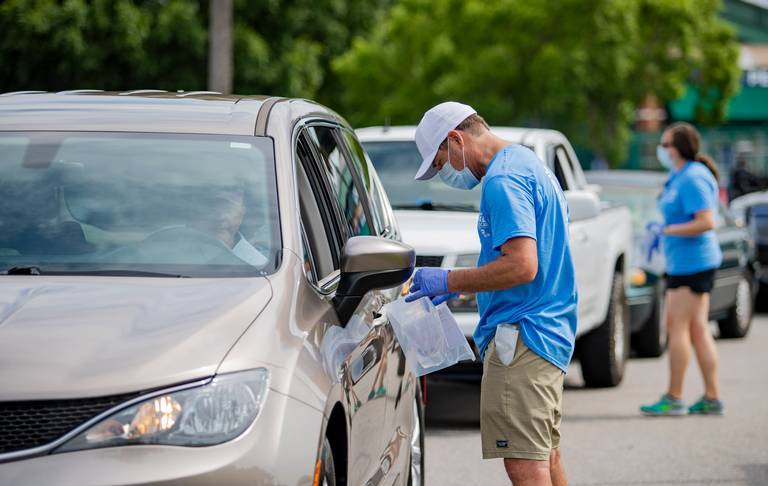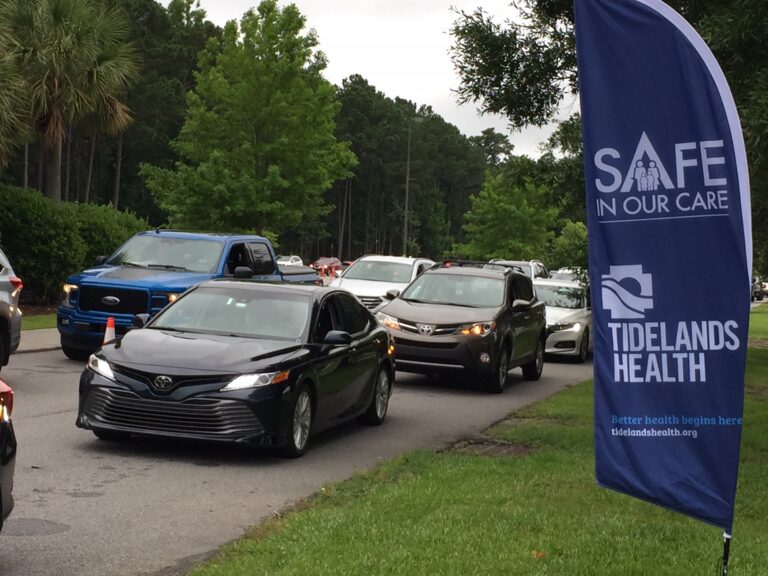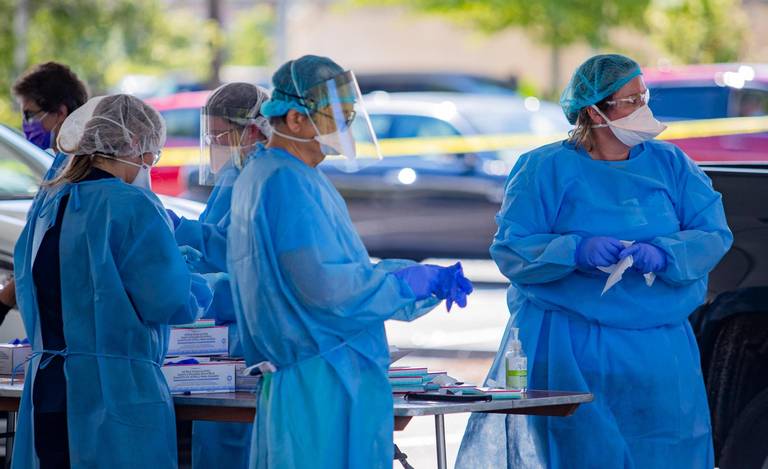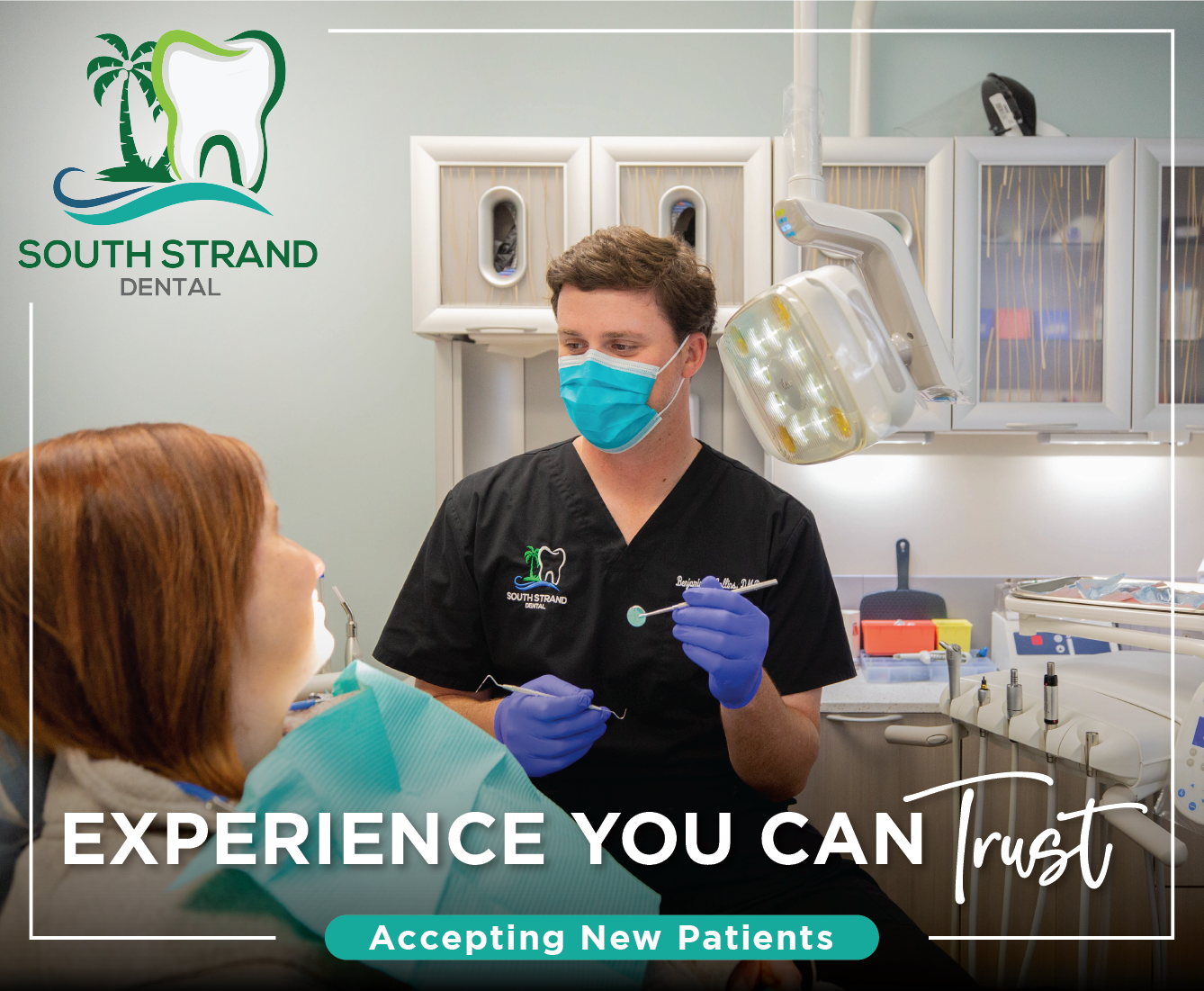Health Initiatives For the Covid-19 Crisis
by Melissa LaScaleia
Tidelands Health is the largest health care provider along the Grand Strand, and serves both Horry and Georgetown counties. The not-for-profit 501(c)(3) has more than 2,000 employees and multiple service lines and ambulatory sites, as well as two acute-care hospitals and two inpatient rehabilitation hospitals.
All of these resources means more comprehensive care for the community.
The organization has been known as Tidelands Health since 2015 but traces its roots to 1950, when they had one hospital in Georgetown.
“Because we’re situated in one of the fastest growing regions of the country, we’ve grown very fast over the past ten years as we’ve continued to expand the organization to meet the needs of the population— both with geographic distribution as well as with the size and scale of our offerings,” says Gayle Resetar, chief operating officer of Tidelands Health.
As with any health system, Tidelands Health has a number of services to care for you if you’re sick, but they also prioritize proper health screenings for at-risk populations to have early detection and thus early intervention.
“We’re engaged in identifying how we can prevent disease,” Gayle says. “We’re not just taking care of patients with illnesses, but those who may be more susceptible to them.
“Our mission is to help people live better lives through better health. We’re very interested in our community’s health status as much as we’re interested in providing exemplary sick care.”

In keeping with this mission, Tidelands Heath is engaged in a variety of population health initiatives like pre-diabetes and cancer screenings.
Since Covid-19, they’ve incorporated testing for the virus into their protocol.
“When Covid-19 began full scale in March,” Gayle says, “we began ramping up for a spike in ICU admissions and began to do a few things to be prepared to respond to a significant increase in inpatient hospitalizations.
“The timing was such that when schools closed, businesses closed, and the stay-at-home order was issued, we flattened the curve. We temporarily suspended elective surgeries and procedures both to ensure that we had sufficient workforce for emergency cases, as well as to make sure that we had sufficient personal protective equipment.
“We certainly saw some Covid-19 patients, but we didn’t see the surge we anticipated.
“When we began to work on preparations, what we called our surge program, we began processes to make sure we were actively screening and testing patients at the right time, in the right place, and with the right resources. Through the early part of Covid, we managed to not overwhelm our system, and were able to provide the services the community needed.”
By May, as the system began to be more stable, Tidelands Health began to encourage the community to get their normal health care services back on track.
Safe in Our Care is a campaign of protocols and procedures they implemented— setting in place different ways of doing business.
“We changed the way we operate,” Gayle says. “We began screening patients for fevers when they came in the door, increased sanitary procedures, and ensured adequate distance between people so that we were ready to safely take care of people.”
At the same time, the state was working on beginning to lift the stay-at-home order and getting businesses operational again, but wanted to do that with an expansion of community-wide screenings for Covid-19 on a large scale.
“DHEC asked for provider partners to help facilitate testing in the community,” Gayle says. “We were actively testing in our primary care locations, and were well positioned to step up and support their mission of testing 2% of the population. We also set up outdoor clinics where you could go and be evaluated if you had symptoms of Covid-19, instead of having to go to the emergency room.”

As of mid July, Tidelands Health has performed more than 15,000 Covid-19 tests. In partnership with DHEC, they are on track to completing another 10,000 tests by the end of July.
“We’re leading our community with this,” Gayle says. “There’s no other health system in our community that’s been involved with testing the way we have been.”
Tidelands Health administers tests in a variety of different ways. If you are admitted to the hospital you may receive one. If you have symptoms of Covid-19, you can go to one of their primary care clinics to be evaluated by physicians.
Other testing events are free drive-through community screenings in partnership with DHEC where no appointment is necessary.
At the free testing events, people wait in line from the safety of their cars and pull up to check-in stations to register. Then they drive on to a collection station to give a specimen to be tested.
Tidelands Health has perfected the efficiency of these events so that they are able to test 3,000 people over the course of 6-7 hours, with wait times averaging about one hour per person. The turnaround time for test results is no more than five business days.
“There aren’t many places testing 3,000 people a day,” Gayle says. “And not every community health system is testing at community health events. Some health providers have stopped testing for asymptomatic people.
“Right now, we’re continuing to break records every day with widespread increases in Covid-19 cases in our community and the number of hospitalizations is growing as well.
“These community screenings are a piece of our overall response plan. It’s a two-part process— working with additional staff for ICU beds, and testing. Testing is one of the weapons in our arsenal because it helps reduce the spread and ultimately reduces the number of patients landing in the ICU.”

As of the publishing of this article in mid-July, Tidelands Health has not yet made plans to continue community testing events into August.
“It depends on how much community spread there still is,” Gayle says. “Since this is a collaboration with DHEC, they will be a part of the decision-making process as well.”
Gayle doesn’t expect we will be out of this by August 1, and emphasizes how crucially important it is to continue to manage the spread.
That means increasing the use of mask-wearing in public places; maintaining a distance of 6 feet; and frequent hand washing; as well as immediate quarantining if you do receive a positive diagnosis for Covid-19.
Gayle says that the community’s response to their testing and increased safety measures has been overwhelmingly positive.
“We’ve had a significant outpouring of community support for our local health care workers in the last three months,” she adds. “We’ve had a number of donations of things like food and shoe inserts from Dr. Scholl’s to support health care workers on the front lines who are working long hours.
“Early on, when the fear of running out of PPE was palpable, we came across additional N95 respirators in our warehouse that had been there for some years.
“The masks were good, but the elastic bands had rotted away. We worked with 2,000 community volunteers to sew new elastic straps on them, and are now well positioned with our preparations.
“We’re so grateful for the support from our community and to be able to serve them in health.”
Tidelands Health
























